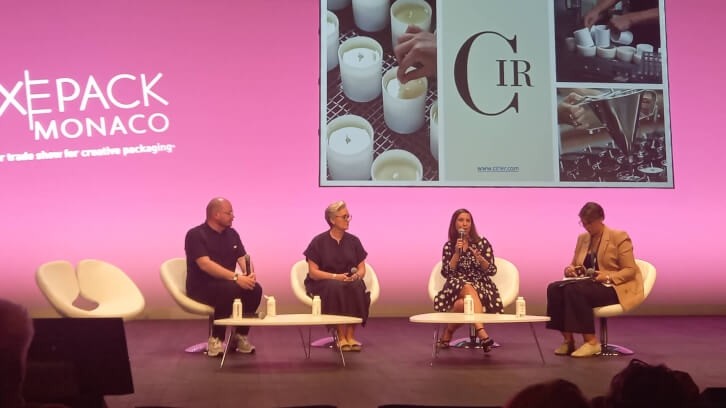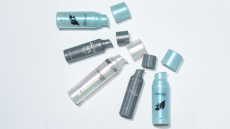Live from LuxePack: what’s important in the expanding home fragrance market?

For this discussion, the speaker lineup included: Nathalie Dickeli MD at Superga Beauty, Stephane Marechal, the founder of luxury niche fragrance company Graphème Paris and Anne-Celine Andreola Corporate & Private Labels Sales Manager at French candle-making company CIR.
According to Dickeli, when it comes to home fragrance, the scent itself is the most important factor for brands to consider. “We scanned over 500 consumers and they chose scent as the most important purchase driver,” she shared.
“This was followed by price and then duration.” She said in this particular research, aesthetics came fifth and the brand name was the least important factor.
Research by Superga Beauty found that sensorial and neuroscience-based fragrance positively influenced emotions. “We asked people to smell scents under medical supervision and monitored their brain reactions,” she explained. “The part of the brain activated by scent is the same as the memory part.”
As a result, the company has created a platform with details of scented notes and their different impacts on emotions, with patented algorithms to guide perfumers when creating fragrance.
In separate research – an Appinio survey of 500 French consumers – Superga Beauty learned that 78.6% of participants thought that scent influenced their emotions; 87.4% were interested in home fragrances that would positively influence their emotions; and 89.2% wanted a home fragrance that was adapted to their needs.
Considering wax types for candles
Anne-Celine Andreola from candle-making company CIR said that: “The candle has become an object in itself.”
“The quality of wax is at the heart of our concerns,” she explained, and shared that CIR creates one that’s completely plant-based, made with rapeseed.
Her advice was to always consider what type of wax you’re using for a scented candle, as “the fragrance won’t have the same olfactive outcome depending on the type of wax.”
She shared that many large fragrance companies are testing out their scents on a variety of wax types early in the R&D process to find out how a scent ingredient smells on that particular type of wax.
She also spoke about opportunities in new markets, for example, how CIR worked with luxury hotels to create an “olfactive environment in hotel rooms, to create memories and have a global experience”.
”We need to think beyond borders to have home sprays and pillow mists,” she concluded.
Creating home fragrance with water
According to Dickeli, water is set to become a viable alternative to alcohol for home fragrance products.
She spoke about Aquaco – a technology from Expressions Parfumées, which works with Superga beauty.
“Regulations are very strict on home fragrances. For example, pillow mist affects the brain. We have some studies on this,” she explained.
Dickeli believed there were many benefits to creating water-based home scents.
“Water-based home fragrances last longer. We carried out a study and found that this is more potent than alcohol and lasts longer too. After four hours the water-based scent kept 85% of its fragrance,” she said.
”When these products are not made with alcohol, they’re not dangerous anymore – so there is no customs for export and no pollution and they will comply with strict US regulations,” she explained.
She also said that water has a much lower volatility than alcohol.
Although there were some things to consider though, she said. “Diffusion sticks must be made of certain material if you use water instead of alcohol, as scent won’t rise up in the bamboo sticks.”
She also said that manufacturing is still a constraint for this innovation right now, as “the technique is quite specific.”
And that companies will need to have microbiology tests done and will need to use a ‘cosmetic-like’ water if they formulate home fragrance with water rather than alcohol. She also explained that it can create cloudy-looking liquid, which may not be aesthetically pleasing for consumers.
“It’s not widespread yet, but I strongly believe in this,” concluded Dickeli.
Stepping into China’s expanding home fragrance market
And finally, the speakers discussed how the home fragrance market is only now expanding in the Chinese market – as candles were once seen as sacred and attached to religious practices.
Indeed, this fact is still true for older generations, but younger generations are driving growth in this market.
According to Dickeli, the ‘Made in Europe’ mark is important, but there are also a lot of mass-market candles made locally now.
She noted that design is a big driver of purchase in this market. “They want something to enhance their home. When we work on the Asia market for fragrance the pack design is very important they want something very refined,” she concluded.












